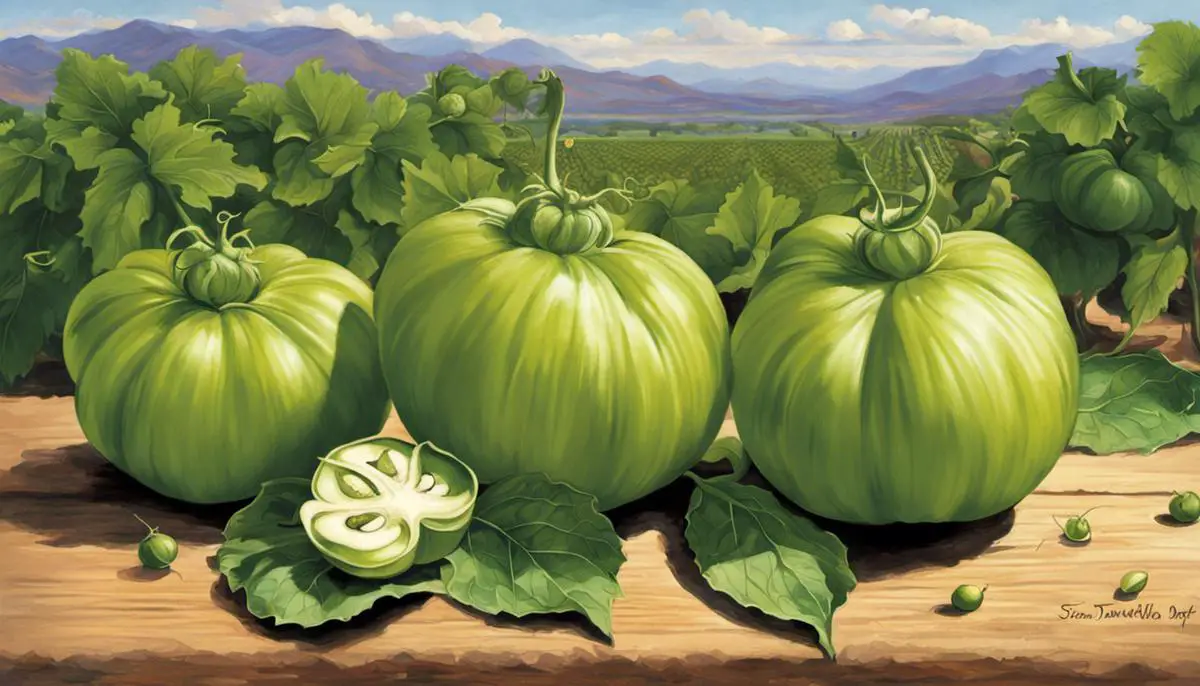As a versatile and flavorful addition to numerous culinary dishes, tomatillos have gained significant fame over the years. Despite their popularity, understanding their growth process, identifying their peak of ripeness, and knowing how to harvest and store them remains a challenge for many. This guide aims to delve into the world of tomatillos, expounding on their basic characteristics, various varieties, and the physical changes they undergo as they mature. In conjunction, it also provides insights into recognizing ripe tomatillos through tell-tale signs such as changes in color, texture, and size, while differentiating between underripe, ripe, and overripe fruits. Additionally, it imparts knowledge on the best practices for harvesting and storing tomatillos, ensuring their freshness and viability are maintained.
Understanding Tomatillos
Understanding Basic Characteristics of Tomatillos
Tomatillos, also known as ‘Mexican Husk Tomatoes’, are a staple in Mexican cuisine and widely used for dishes like salsa and chili verde. Unlike tomatoes, tomatillos grow within a husk, which resembles a greenish-brown paper lantern. Measuring between 1 to 2 inches in diameter, they are smaller than standard tomatoes. The fruit itself is green, but some varieties can ripen to yellow, purple, or red. Tomatillos have a distinctive tart flavor which becomes more robust and fruity as they ripen.
Reader Poll: What online courses would interest you?
Varieties of Tomatillos and their Growth Process
While all tomatillos have similar characteristics, different varieties may present subtle differences in color, size, and taste. The most common type is the green tomatillo, which is known for its tart flavor. Purple tomatillos are slightly sweeter, while yellow ones have a milder tartness. Large-fruited, green ‘plaza latina giant’ tomatillos are excellent for salsas, and tiny ‘pineapple’ tomatillos bring a novel, fruity accent to dishes.
Tomatillos are typically planted from seed in the spring and grow during the summer season. They prefer sunny locations and well-drained soil. Just like tomatoes, they require a supporting cage or stake to keep them upright as they grow.
Identifying Physical Changes in Maturing Tomatillos
As tomatillos grow and mature, you will notice several physical changes. Initially, the plant produces small, yellow flowers, which will develop into tiny fruits wrapped in a thin, paper-like husk. As it matures, the tomatillo fills the husk and eventually bursts through it.
Subscribe to our newsletter!
Ripe tomatillos turn from green to a more vibrant hue, depending on the variety. Mature tomatillos are usually firm to the touch but not hard. Also, the husk that once tightly surrounded the fruit loosens and begins to dry out when the fruit is ripe.
Terminology Associated With Tomatillo Maturation
Several crucial terms are associated with tomatillo maturation. “Setting fruit” refers to the phase of growth when the plant’s flowers are fertilized and start to develop into fruit. “Ripening” is the process where the fruit changes color, softens, and develops its flavor. “Harvesting” is when the ripe fruit is removed from the plant. For tomatillos, this is typically when the husk has split, and the fruit has filled and slightly burst the husk. “Blanching” is a cooking term often used in relation to tomatillos — it involves quickly boiling and then cooling the fruit to make peeling and seeding easier.
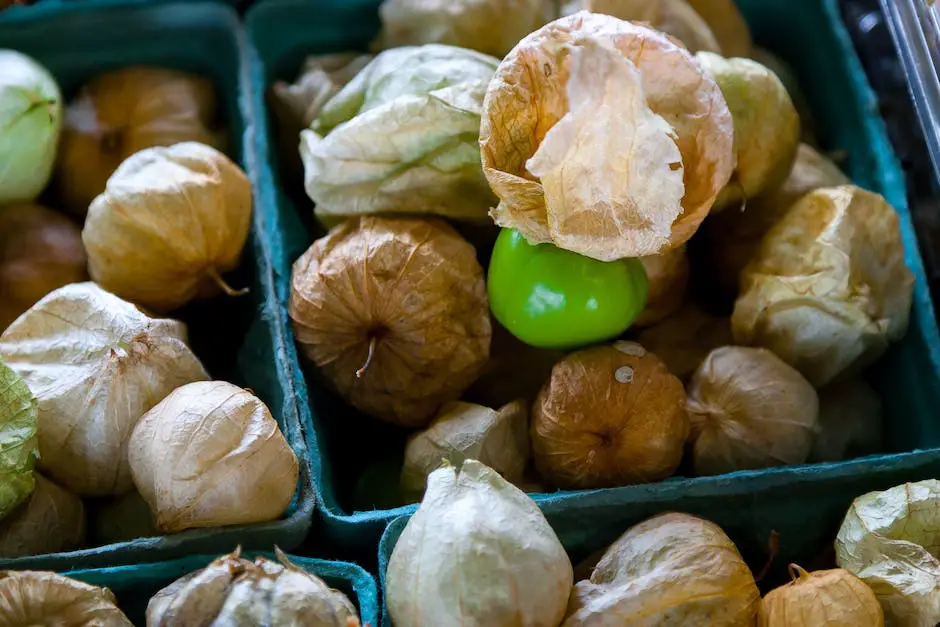
Recognizing Ripe Tomatillos
Understanding the Colors of Tomatillos
Ripeness in tomatillos can be judged by observing the change in their color. When a tomatillo is underripe, it often appears slightly green or even yellowish-green. As the fruit ripens, the color will transition into a deeper, richer green. However, depending on the variety, some ripe tomatillos may also have a purple or red hue. Remember, the color transition signifies the ripening process, which is an important factor to consider while harvesting or buying these fruits from the market.
Checking the Texture and Husk Condition
When a tomatillo is ripe, its skin should feel smooth but not soft or mushy. The texture is somewhat similar to a firm tomato. This will provide an indication that the fruit is not yet overripe. Overripe tomatillos tend to become softer to the touch, and their insides may feel squishy when pressed slightly. Additionally, a ripe tomatillo’s husk will be tight and intact, whereas in the case of an overripe fruit, the husk may be loose, shriveled, or damaged.
Assessing the Size of the Tomatillo
Size is another determiner of a tomatillo’s ripeness. Tomatillos are generally considered ripe when they are about the size of a golf ball, approximately 1 to 2 inches in diameter. An underripe tomatillo will be smaller than this, while an overripe one may be slightly larger. However, it’s crucial to note that size can vary depending on the specific variety and growing conditions, so size should not be the sole factor when assessing ripeness.
Recognizing the Signs of Underripe, Ripe, and Overripe Tomatillos
Knowing how to differentiate between underripe, ripe, and overripe tomatillos can help ensure you’re using them at the optimal time. Underripe tomatillos will be smaller, firmer, and brighter green than ripe ones. They’re often a little on the tart side. Ripe tomatillos, on the other hand, are slightly larger, have a richer color, and may have a slightly sweet, tangy flavor. Overripe tomatillos will be larger still and may show signs of softening or decaying. These may be too sweet for most recipes and should be used with caution.
In conclusion, when determining the ripeness of a tomatillo, the color, texture, and size are all crucial factors to consider. Combining all these factors can provide you with a decisive guide to ensure you’re using ripe tomatillos.
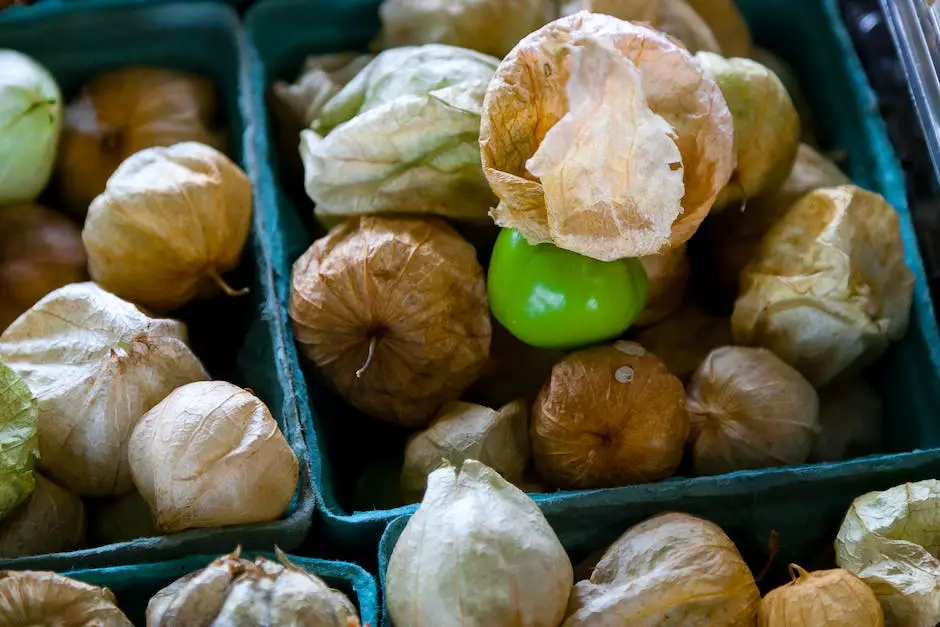
Harvesting and Storing Tomatillos
Recognizing Ripe Tomatillos
Ripe tomatillos are ready to be harvested when they become firm and their papery husks turn from green to a tan or light brown color. Pay attention to the fruit’s size as well, as mature tomatillos are generally between one and two inches in diameter. Another key hallmark of a ripe tomatillo is if the fruit fills out its husk completely or even starts to burst through the husks. The color of the fruit inside typically changes from green to yellow as it ripens. However, some prefer to pick green tomatillos as they tend to be tangier and possess more flavors.
Harvesting Tomatillos
Always use clean, sharp scissors or pruning shears to harvest your tomatillos. Cut the stem close to the top of the fruit to avoid damaging the plant or the fruit itself. Tomatillos tend to drop to the ground when they’re ripe, but it’s best to pick them from the plant as soon as they show signs of ripeness. This helps to avoid issues like rotting or getting eaten by pests.
Storing Tomatillos
To store your ripe tomatillos, keep them in their husks until you’re ready to use them. Do not wash them before storing as the moisture could encourage mold growth. Keep them at room temperature if you plan to use them within a few days. If you need to store them for longer, put them in a paper bag or in a container with a lid in the refrigerator. They should stay fresh for up to a month when stored properly.
Freezing Tomatillos
If you want to store your tomatillos for several months, you can freeze them. To do so, remove the husks and rinse the fruits. After they’re dry, place them on a covered baking sheet in a single layer to freeze. Once frozen, transfer your tomatillos to a sealed container or freezer bag. This method prevents them from sticking together and allows you to use as many or as few as you need each time. When frozen properly, tomatillos can be stored for up to a year.
Always make sure to label your containers or bags with the date of freezing. This will help you keep track of their freshness and use them within the advised timeframe. Remember, quality and taste might decrease over time when frozen. Thawing overnight in the refrigerator before use is generally recommended. However, no harm comes from using them directly from the freezer in your cooking.
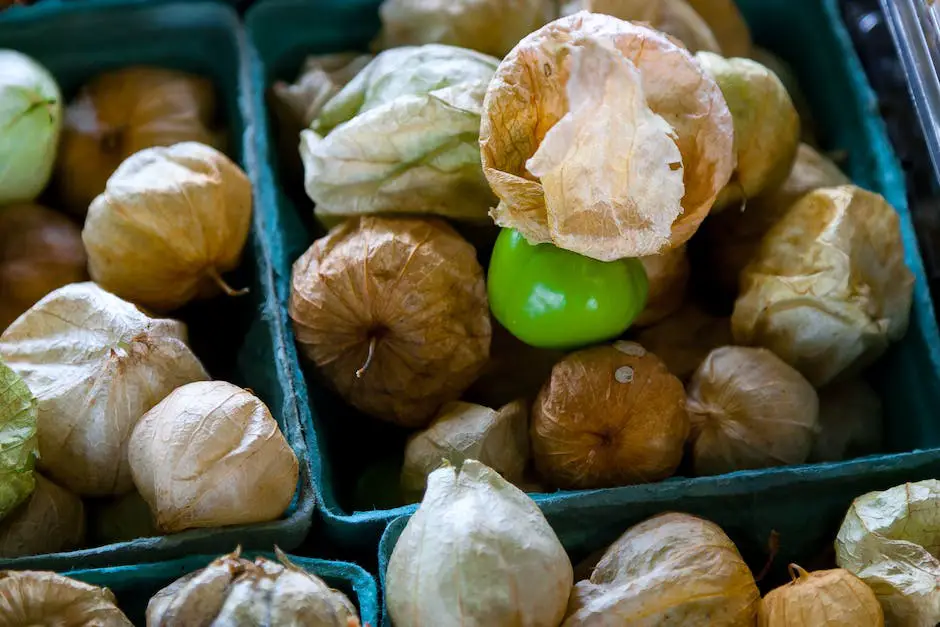
Troubleshooting Common Problems
Understanding Tomatillo Ripening Issues
Tomatillos, encased in paper-thin husks, are common in Mexican cuisine and are often harvested while still green. However, understanding the ripening process and its related issues can be a tad bit more challenging. It’s essential to know what to look for to ensure a healthy and productive harvest.
Signs of a Ripe Tomatillo
To determine if a tomatillo is ripe, check the outer husk first. The tomatillos are considered ripe when their husks split and the fruit inside fills them completely. The flesh of a ripe tomatillo should be firm, not soft or squishy.
The color of a ripe tomatillo varies depending on its variety but will generally change from a bright green to a lighter, yellowish-green color, or even to purple or yellow. A slight give when squeezed indicates it has reached optimal ripeness.
Mitigating Issues with Tomatillo Ripening
Understanding how to navigate common issues with tomatillo ripening can contribute to a more productive harvest. For tomatillo plants that seem to be dropping fruit prematurely, consider the following preventive measures:
- Regularly check for and manage pests: Most pests can be removed by hand or with a strong water spray. Using natural pest control methods such as neem oil can also be helpful.
- Maintain optimal growing conditions: Tomatillos generally prefer well-draining soil and at least six hours of sunlight per day. Make sure the plants are adequately spaced to promote good airflow and reduce the likelihood of diseases.
- Regular watering: Inconsistent watering can lead to stress and cause the fruit to drop prematurely. It’s crucial to provide consistent, deep watering on a schedule, usually an inch of water per week either at once or divided into two applications.
By understanding the ripening process of tomatillos and how to handle common cultivation issues, you can ensure a healthy growth cycle and bountiful harvest of this versatile fruit.
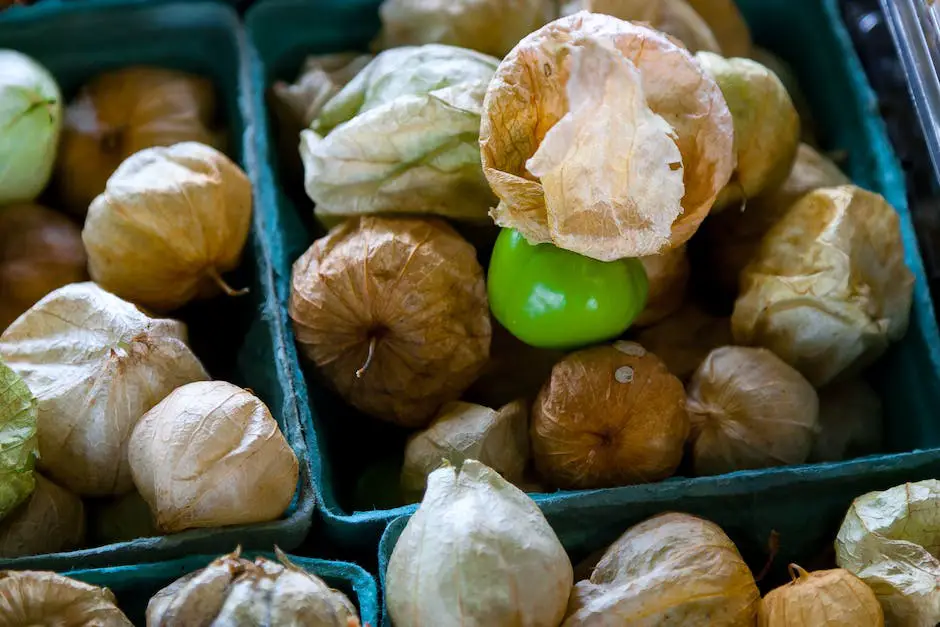
The art and science of growing tomatillos require not only a fundamental understanding of their characteristics but also the ability to identify the signs of maturity. With practice, recognizing ripe tomatillos and distinguishing them from underripe or overripe ones becomes a rewarding endeavor. On top of identifying ripeness, acquiring proper techniques for harvesting and storing these fruits is crucial to preserving their freshness and maximizing their use in delicious recipes. Moreover, being prepared to troubleshoot common problems related to their ripening process ensures a healthy and productive harvest. Through this comprehensive guide, having a deeper appreciation for tomatillos reaches far beyond their culinary value, extending to their cultivation and harvest.

